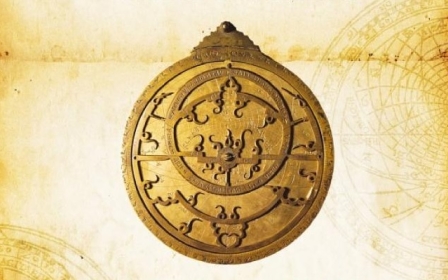A thousand 9/11s

Fourteen years ago, 2,996 people were murdered when four civilian planes in the United States were hijacked by al-Qaeda extremists, one flown into the Pentagon, and two into the World Trade Centre towers.
But this was just the beginning of the bloodletting.
The 9/11 attacks ushered in a new era of global warfare to root out extremism. Far from defeating al-Qaeda, the "War on Terror" has seen its enemy metastasise into a self-styled "Islamic State" (IS).
Along the way, we have seen the collapse of the rule of law: the illegal invasion of Iraq, the fabrication of intelligence on weapons of mass destruction (WMD), extra-judicial assassinations, systematic torture (still continuing), organised kidnapping, indefinite detention and global mass surveillance.
We have also seen the wanton abuse of law to extend unaccountable state authority across Western homelands: eroding habeas corpus, policing ordinary citizens, normalising racial profiling and criminalising dissent.
Fighting fire with fire
Conservative figures suggest that since 9/11, the "War on Terror" has killed some 14,000 Afghans, 35,000 Pakistanis, and 120,000 Iraqis – excluding indirect deaths from destruction of power, water, sanitation and medical facilities: 150,000 people overall. That’s fifty 9/11s.
At the higher end, a survey of major epidemiological studies by the Nobel Prize-winning doctors group, Physicians for Social Responsibility, puts the direct and indirect death toll at some 1.3 million people. That’s over four hundred 9/11s. Yet another study based on UN Population Division mortality data suggests the full death toll may be as high as four million: that’s over a thousand 9/11s.
The casualty figures keep wracking up. An August study by the nonprofit journalism project Airwars found conservatively that coalition strikes against IS had killed hundreds of civilians – perhaps over a thousand – in the first year of operations.
Drone terror factory
This week, the government announced that two British IS militants, Reyaad Khan and Ruhul Amin, were killed by a UK drone strike in Syria on 21 August. But the previous month, Khan was mistakenly reported killed in a US drone strike by British papers, citing local accounts.
Human rights law group Reprieve reports that it takes on average three drone strikes to assassinate one "kill list" target. How many others were mistakenly killed by British drones in the attempt to kill Khan?
Last year, a Reprieve study found that US efforts to assassinate 41 targets with drones had killed 1,147 people – that’s 28 unknown people, including women and children, murdered for every terror suspect.
Even Obama’s former top military intelligence official, General Michael T Flynn, admits that the legitimate grievances created by drone massacres is producing more extremists than they kill.
Arming groups behind 9/11
Flynn ran the Pentagon’s Defense Intelligence Agency (DIA) from 2012 to 2014. He now confirms on record that in August 2012, the DIA had warned the White House of the rise of IS as a direct consequence of Western, Gulf state and Turkish “support” for al-Qaeda affiliated Syrian rebels.
Given the British government’s role in this policy, incubating Britons like Khan, official reticence on the kill list is unsurprising.
In June, UK courts sought to try Swedish national Bherlin Gildo, who was charged with attending an extremist training camp in Syria, receiving weapons training and possessing information on extremists.
In pre-trial hearings, prosecuting lawyer for the Crown, Riel Karmy-Jones, told the court that from 2012 to 2013, Gildo had worked with al-Nusra Front, the “proscribed group considered to be al-Qaeda in Syria,” many of whose followers went on to join IS.
The trial collapsed when Gildo’s defence team pointed out he had joined an anti-Assad group – al-Nusra – which had received British government support, some of which went through a CIA-MI6 al-Qaeda-facilitated arms "rat-line" from Libya to Syria.
Protection racket
The West’s use and abuse of Islamist militants is nothing new.
In his July interview with the French newspaper L’Humanite, Alain Chouet – former head of the Security Intelligence Service of the French Directorate-General for External Security (DGSE) – described the "War on Terror" as a "sham" concealing an ongoing "military alliance" between "Western governments and the financial sponsors of jihad".
Asked about Islamist ideology and its state benefactors like Saudi Arabia and Qatar, Chouet said:
“In the Middle East, the Sahel, Somalia, Nigeria, and so on, we are engaged in military confrontations with the same types of [Islamist] terror groups. Yet we remain allies with those who have sponsored this terrorism for the last 30 years.”
Thus contrary to the Official History of the Osama bin Laden raid, multiple US intelligence sources confirm that from 2006 to 2011, bin Laden’s residency in Abbottabad, Pakistan, occurred under the protection of Pakistan’s Inter Services Intelligence (ISI), with funding from the Saudi royal family.
Simultaneously, the US brokered a joint covert operation with Saudi Arabia through Prince Bandar bin Sultan, then national security chief, to finance bin Laden-affiliated Islamists, in an effort to rollback Shia Iran’s regional influence.
The secret strategy was corroborated by presidential findings and former officials, including retired 30-year MI6 officer Alastair Crooke and John Hannah, Vice President Dick Cheney’s former national security advisor.
Bandar brigade
Yet the US knew Prince Bandar was linked to the 9/11 attacks, according to press leaks on the notoriously classified 28 pages from the 2002 report of the Congressional inquiry.
In his book, Intelligence Matters (2004), inquiry co-chair Senator Bob Graham discusses a top secret CIA memo about two 9/11 hijackers, Khalid Almihdhar and Nawaf Alhazmi, which found “incontrovertible evidence that there is support for these terrorists within the Saudi government”.
Almidhar and Alhazmi were "handled" in the US by several Saudi nationals with close ties to Saudi government officials, who received tens of thousands of dollars in cashier’s cheques in total – about $3,500 a month – from Prince Bandar and his wife, Princess Haifa bint Faisal. Princess Haifa later claimed the money was charity, although Senator Graham and the CIA clearly believed otherwise.
The Obama administration, which has scorned the 9/11 families’ demands to declassify the 28 pages, tapped Prince Bandar yet again in relation to the 2011 bin Laden raid. The US had called him in months before the raid to help negotiate the strategic agreement with Pakistan that led to the Abbottabad operation.
The CIA and bin Laden
The ongoing Saudi relationship with al-Qaeda is masterfully documented in The Eleventh Day (2012), a book by Vanity Fair journalists Anthony Summers and Robbyn Swan.
As early as 1995, they reported, the Saudi royal family paid “protection money” to bin Laden on condition that he avoided targeting the kingdom. The deal was brokered by then intelligence chief Prince Turki al-Faisal.
According to the French daily Le Figaro, French intelligence sources revealed that two months before 9/11 under Prince Turki’s patronage, bin Laden was flown to the American hospital in Dubai for kidney treatment, where the al-Qaeda chief met CIA officials.
Although denied by Washington, Summers and Swan found intriguing corroboration for the story from credible sources who “described the visit independently, in detail, and at the same time”.
They also interviewed Alain Chouet, a DGSE intelligence chief at the time of the alleged meeting:
"Did Chouet credit the account of the contact in Dubai? He replied, ‘Yes.’ Did the DGSE have knowledge at the time that CIA officers met with bin Laden? ‘Yes,’ Chouet said. ‘Before 9/11,’ Chouet observed. ‘It was not a scoop for us – we weren’t surprised.'"
War in the pipeline
Chouet told Summers and Swan that the CIA’s meeting with bin Laden was to persuade the al-Qaeda chief “not to oppose negotiations in Berlin” with the Taliban. If he agreed, he could “return to Saudi Arabia with a royal pardon – under Turki’s guarantee and control,” and the US would “drop efforts to bring him to justice” for previous attacks.
In Berlin, the Bush administration had threatened the Taliban with war if they failed to comply with US demands, which included plans to install a Trans-Afghan oil and gas pipeline that would transport Caspian resources to Asian markets – a project that Obama has recently tried to kickstart. US negotiators also wanted the Taliban to widen its repressive regime to include opposition factions in a bid to create "stability" for the pipeline.
Bin Laden, according to Chouet, rejected the US offer – as did the Taliban. A 1998 al-Qaeda memo obtained by the FBI showed that bin Laden was intimately familiar with ongoing pipeline negotiations between the US and the Taliban.
Indeed, throughout the 1990s, the Clinton administration had supplied military and financial aid to the Taliban via Saudi and Pakistani intelligence to support the movement’s Afghan conquest – all to facilitate the pipeline plan.
The friend of my enemy is still my friend
The extent of Pakistan’s complicity in bin Laden’s extremism was documented in a secret addendum to the 9/11 Commission Report, requested by executive director Philip Zelikow three months before publication, but which arrived too late for inclusion.
Based on sensitive Pakistani sources, the addendum concluded that senior ISI officers had known in advance about the 9/11 attacks, were protecting bin Laden in Pakistan, and that Pervez Musharraf had personally approved his renal treatment at a military hospital near Peshawar.
Like the classified 28 pages, these findings remain suppressed by the US government.
Why then, even as the US unleashes new 9/11s around the world, does it support the very regimes behind the 9/11 attacks?
Because the "War on Terror" is a colossal fiction. In reality, terror is the price of business as usual: and the US is all too willing to pay.
- Nafeez Ahmed PhD is an investigative journalist, international security scholar and bestselling author who tracks what he calls the 'crisis of civilization.' He is a winner of the Project Censored Award for Outstanding Investigative Journalism for his Guardian reporting on the intersection of global ecological, energy and economic crises with regional geopolitics and conflicts. He has also written for The Independent, Sydney Morning Herald, The Age, The Scotsman, Foreign Policy, The Atlantic, Quartz, Prospect, New Statesman, Le Monde diplomatique, New Internationalist. His work on the root causes and covert operations linked to international terrorism officially contributed to the 9/11 Commission and the 7/7 Coroner’s Inquest.
The views expressed in this article belong to the author and do not necessarily reflect the editorial policy of Middle East Eye.
Photo: A hijacked commercial plane approaches the World Trade Center shortly before crashing into the landmark skyscraper 11 September 2001 in New York (AFP)
New MEE newsletter: Jerusalem Dispatch
Sign up to get the latest insights and analysis on Israel-Palestine, alongside Turkey Unpacked and other MEE newsletters
Middle East Eye delivers independent and unrivalled coverage and analysis of the Middle East, North Africa and beyond. To learn more about republishing this content and the associated fees, please fill out this form. More about MEE can be found here.





